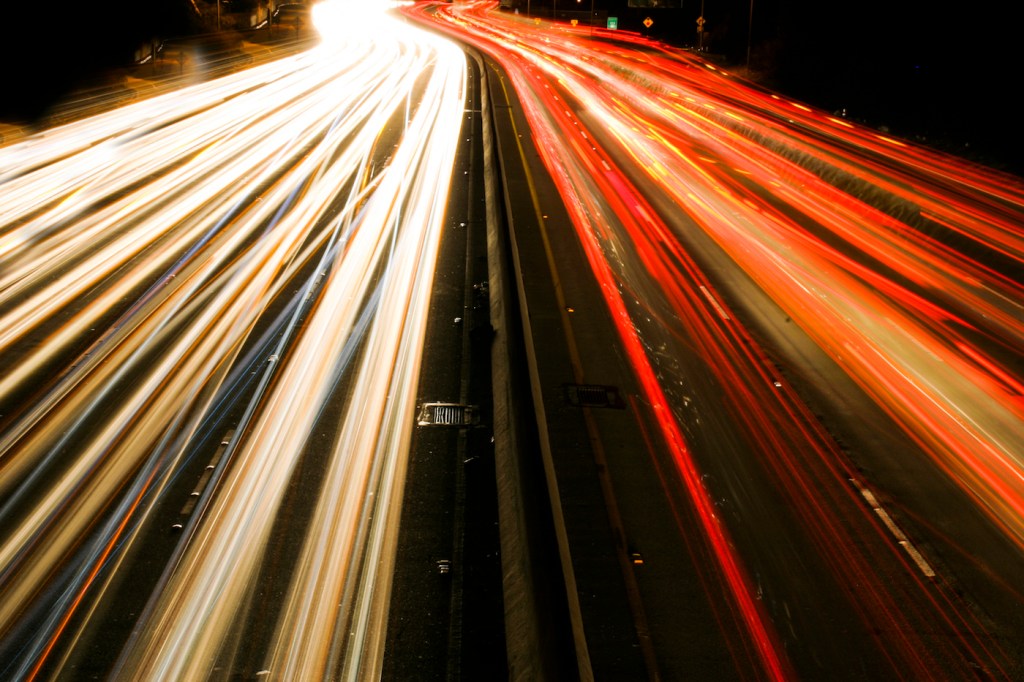Study shows cities with bad traffic may be more resilient to disruptive events

New research by scientists at Northeastern University shows that cities with bad traffic under normal conditions may actually be more efficient at handling adverse events, like accidents and storms. Conversely, some cities with typically low traffic congestion become severely backed-up under the pressure of these disruptive scenarios.
In a paper published Wednesday in the journal Science Advances, Maksim Kitsak, associate research scientist in the Department of Physics and Northeastern’s Network Science Institute, and his colleagues examine the resilience and efficiency in city transportation systems. Efficiency refers to the average time delay a commuter would face annually due to traffic. Resilience is the ability of road networks to absorb adverse events that fall outside normal daily traffic patterns.
The study, conducted in collaboration with the University of Virginia, Arizona State University, and the University of Massachusetts Boston, looked at road networks from 40 major U.S. cities.
“What we show is actually these two measures are not really correlated with each other,” Kitsak said. “One would think that if the city is bad for traffic under normal conditions, it would be equally bad or worse for traffic under additional stress events, like severe weather. But we show that is not quite the case.”
For example, the study found that the Los Angeles transportation network—while inefficient on a daily basis—doesn’t suffer much from adverse events. The road systems are resilient. They function more or less the same regardless of unforeseen incidents.
Traffic in San Francisco is also typically inefficient. But unlike Los Angeles, San Francisco’s transportation network is not resilient. “Even mild adverse events in San Francisco are likely to lead to substantial increases in traffic delays,” Kitsak said.
One would think that if the city is bad for traffic under normal conditions, it would be equally bad or worse for traffic under additional stress events, like severe weather. But we show that is not quite the case.
Maksim Kitsak
associate research scientist in the Department of Physics and Northeastern’s Network Science Institute
Resilience was estimated as the change in efficiency resulting from roadway disruptions, the study says. And it was found to vary greatly between cities, with increased delays ranging from 9.5 percent in Los Angeles to 56 percent in San Francisco.
Why is the City of Angels more resilient than the City by the Bay? Kitsak said there are many factors that influence transportation resiliency, but one of the most important ones is the availability of backup roads. Los Angeles has many, while San Francisco does not. San Francisco also relies heavily on bridges, which separate the city from other parts of the Bay Area where many commuters live.
“If some of these bridges collapsed or were blocked due to traffic accidents, all of the sudden, traffic in the San Francisco area would become very inefficient,” Kitsak said.
What about cities with relatively little traffic? The study shows that even efficient transportation systems can fail to be resilient. Look at Providence, Rhode Island, or Jacksonville, Florida. These cities aren’t normally congested. But if something unexpected happens, traffic can increase significantly, Kitsak said.
On the flip side, some cities were found to be particularly resilient to adverse events, with Cleveland and Salt Lake City among the high achievers. Another project is currently underway to identify and quantify what other factors—besides availability of backup roads—make some cities more resilient than others, Kitsak said.
“Our study shows there is a difference in the way you need to plan for normal traffic versus disruptions that are rare, like heavy rain, flooding, or snow storms,” said Igor Linkov, risk and decision science lead with the U.S. Army Engineer Research and Development Center and an author of the study. “With normal traffic, you need to focus on efficiency. For events like a big snowstorm or flood, you need to think about resilience.”
The research findings are also important because until now, policy responses and investments to improve transportation networks have been based on normal traffic conditions, Kitsak explained.
“Very little attention is being paid to questions of how road networks would respond if there were some major events like construction, sports games, or very bad weather,” Kitsak added. “We argue that both efficiency and resilience need to be taken into consideration.”





